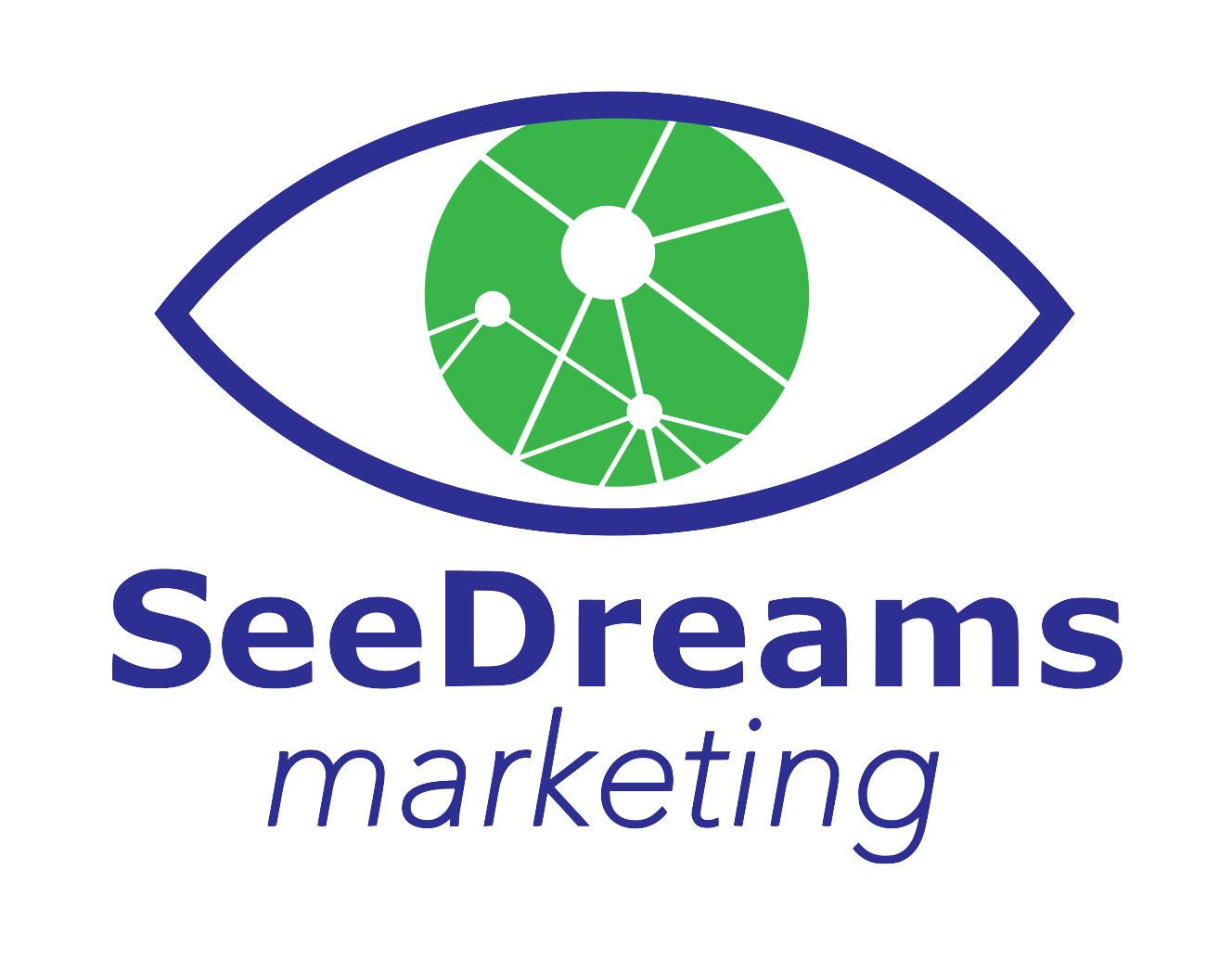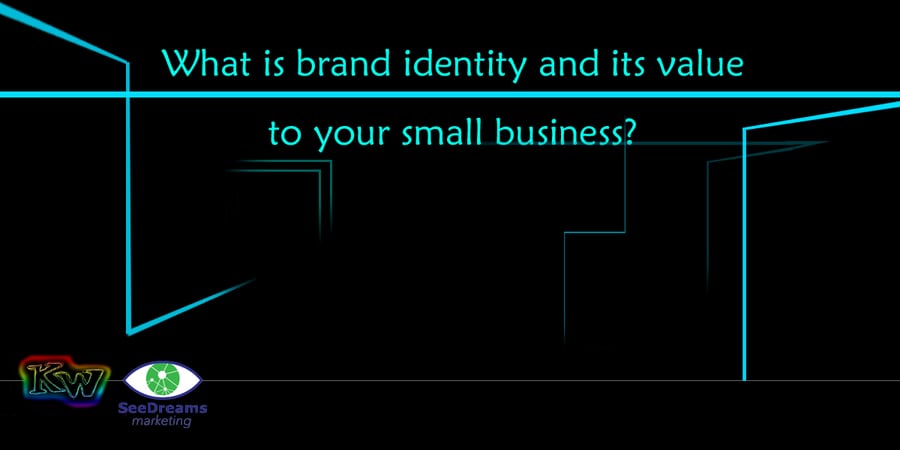What is Brand Identity?
Simply put, brand identity is your brand’s “personality”. It is the mission, values, voice, tone, and visual appeal of your small business. Brand identity is the starting point of your brand and branding strategies, designed to connect you to your audience and deliver your messages in the manner you wish them to see. In a way, it humanizes your brand and interacts with your customers. However, before you try to establish your brand identity, you must define your small business’s persona. Do you want to look and sound serious and professional, social and fun, or exciting and adventurous? There are numerous amounts of personas, but once a persona is chosen, be consistent with your choice. Keep your colors, fonts, tagline, voice, etc. the same and in-line with that persona from the start. This allows customers to recognize and associate your products and services with your brand identity, building connections with your business. Any inconsistencies damages that recognition and your customers’ opinions of you, sending them to your competition. Once you have established your persona, you can start developing a content strategy to express your messages in the correct tone and voice for your different channels such as your website, social media, and advertisements. At the same time, you can start the brand design choosing your color scheme and fonts to apply to the logo, website, and emails. The solid combination of your persona, content strategy, and design is what makes up your brand identity. Be clear of what your small business offers with your brand identity. For example, don’t portray your business as a night club if you are a family restaurant. You want to make a good first impression on your customers that resonates and creates long-lasting impressions, developing brand loyalty. Once you have narrowed down your brand identity, you can incorporate it in to your small business’s brand and branding strategies.
What is Brand Identity Compared to a Brand and Branding?
A common misunderstanding is that a company’s brand, branding, and brand identity are the same thing. Actually, they are separate major entities of a business’s branding strategy that work together to connect you to your customers. As I mentioned before, develop your brand identity first, but use it while you develop your brand and branding.
- Your brand acts on the senses and is how everyone “feels” about your company through visual and audio stimulation. The multiple elements in your logo and tagline gives people, whether they are customers or not, a certain feeling about your company with its shapes, colors, and voice. The goal of this emotional connection is to intrigue your customers, gain their trust in your brand, and associate your products with a pleasant experience.
- Branding is the “big picture” for your brand. It is the marketing of your brand on all your different channels. Your website, business cards, social media posts, and product packaging are a few examples of places to exercise your branding, but you must apply it to all your marketing opportunities for the most success. The presentation of your branding carries your business’s reputation with it, so ensure you are diligent and remain consistent with all of these elements.
Developing these three pieces of the branding strategy parallel with each other makes the design process easier. You can match certain shapes, colors, and fonts to express the persona you chose. Understanding the differences between these three terms allows you to align all your brand elements.
The 9 Important Factors of Brand Identity Design
It’s now time to bring your small business’s brand identity to life. The design process is putting the different elements that make up your brand identity into the visual representations of your business. If you are like many small business owners, you are going to need a brand identity designer. Be selective choosing a designer and make sure they include these nine factors in your design.
- Your color scheme is a major piece to your brand identity. Certain theories show different colors have different effects on people. Strategize your color selection according to your brand identity.
- Green is a very resourceful color to use in your brand identity. It is calming and stimulates harmony, making your brand approachable by a diverse audience.
- Blue is associated with peace and is trustworthy to the viewer. Many companies use blue to instill trust with their customers.
- Yellow is a happy color that gives an “affordable” feeling.
- Red and orange are loud colors and are usually involved with youthful themes.
- Black is a more serious and sophisticated color. It is associated with power.
- Purple connects to royalty and respect giving a more opulent feeling. Beauty products commonly use purple.
2. Just like the colors you use, the shapes you use have different effects on people as well. Again, strategize your shapes and lines selection to follow your brand identity.
- Simple straight lines can have quite an impact on your customers. Even the way they are oriented has very different meanings. For example, vertical lines represent strength but horizontal lines are more warm and gentle. Knowing this, if you owned a construction company and wanted to incorporate straight lines in your brand identity, you would be more likely to use vertical lines over horizontal.
- Circular shapes without edges are welcoming shapes. They are more feminine and present a sense of community. This gives customers comfort and makes them want to belong to this group. Obviously, this element is common with community themed organizations.
- Straight line shapes such as triangles, squares, and rectangles are versatile and used among many brand identities. They can be used in different ways to display your brand the way you want. Certain lines could have an exciting feel compared to a professional one with little adjustments of the shapes like an aggressive slant. Good communication with your designer gets you the shape you want, so make sure you are clear about your vision.
3. Your font choice shows how you wish to present yourself with your text. Are you going to sound more traditional, modern, or feminine? Knowing these different font styles keeps your persona in line with your brand identity.
- Display fonts are the least traditional style of font. They can personalize your text a little more by adding special elements and differentiate your brand. Display fonts let you stand out with the text element of your visual branding strategy.
- Script fonts are cursive style fonts. They have elegant curves and fancy tails in their letters. These font styles give a stylish, feminine, and classic style to your brand identity.
- Serif fonts are fonts with a slight projection finishing off a stroke of a letter. Times New Roman, Courier, and Palatino are all examples of Serif fonts. They present a trusted and traditional look to your text.
- Sans Serif fonts do not have the projections coming off its letters. Helvetica, Arial, and Geneva are examples of Sans Serif fonts. These fonts project a more sleek and modern appearance to your brand identity.
4. After choosing your colors, shapes, and fonts, you are now ready to design your logo. Your logo is the centerpiece of your brand, branding, and brand identity. It plays such a large role that many times it is mistaken for all three. As you work with your designer on your logo, make sure you clearly communicate your business’s persona. Make it visually appealing with the elements that add the characteristics you want. Your goal is to create an image that makes a long-lasting impression that clearly communicates who you are as a business. Make sure to design your logo for longevity. Don’t try to base your logo on trendy design. The worst thing for your brand identity is to have an outdated logo the public doesn’t like. The logo design process requires continuous back and forth communication between you and your designer, along with many revisions. Once you have decided on a final logo, make sure your designer gives it to you in multiple formats. You want a color logo on a white background, color logo on a transparent background, and a black and white version all in different sizes. Your logo is used on a variety of marketing channels, so having multiple versions and formats allows you to have what you need, when you need it.
5. Your website is where your brand identity stands out the most. It is your digital representation of your small business and is where you can loudly state, whether in text or visual statements, your brand identity. People see every aspect of your brand identity on your website such as your color scheme, fonts, shapes, logo, voice, etc. It is the closest thing your customer has to physically being in front of you, so let it represent you in the best possible way.
6. If you are running email marketing campaigns, you still want to keep the design of the email in-line with your brand identity. Customize your emails to include your colors and logo. Keep your voice the same as well, whether it’s professional or humorous, you still want to present yourself consistently on all your marketing channels.
7. Business cards should be direct in their design. It should tell the person holding your card important information about you such as your business name and contact information. Most businesses include their logo on their business cards but if you choose not to, make sure to include your colors, fonts, and other elements in your brand identity.
8. Your social media platforms are a great way to humanize your brand with your customers. You can present your voice in a variety of ways here, but keep it consistent with your brand identity. Try to incorporate your logo, tagline, or colors in your profile and cover photos. Social media connects you to a vast amount of people giving you the perfect chance to present your brand identity.
9. If you manufacture and produce your own products, product packaging is another great way to highlight your brand identity. Again, you can put your logo, colors, tagline, and other aspects of the brand identity all over your packaging.
As I said in the introduction, your brand identity is your personality. It is your fingerprint for your business. Everything that makes your business unique in its character is your brand identity. Take your time to piece all the necessary elements together and create a strong brand, branding, and brand identity in unison. This sets your brand up for success from the very beginning.
Resources
https://www.investopedia.com/terms/b/brand-identity.asp
https://www.thebalancesmb.com/brand-identity-and-marketing-2295442


